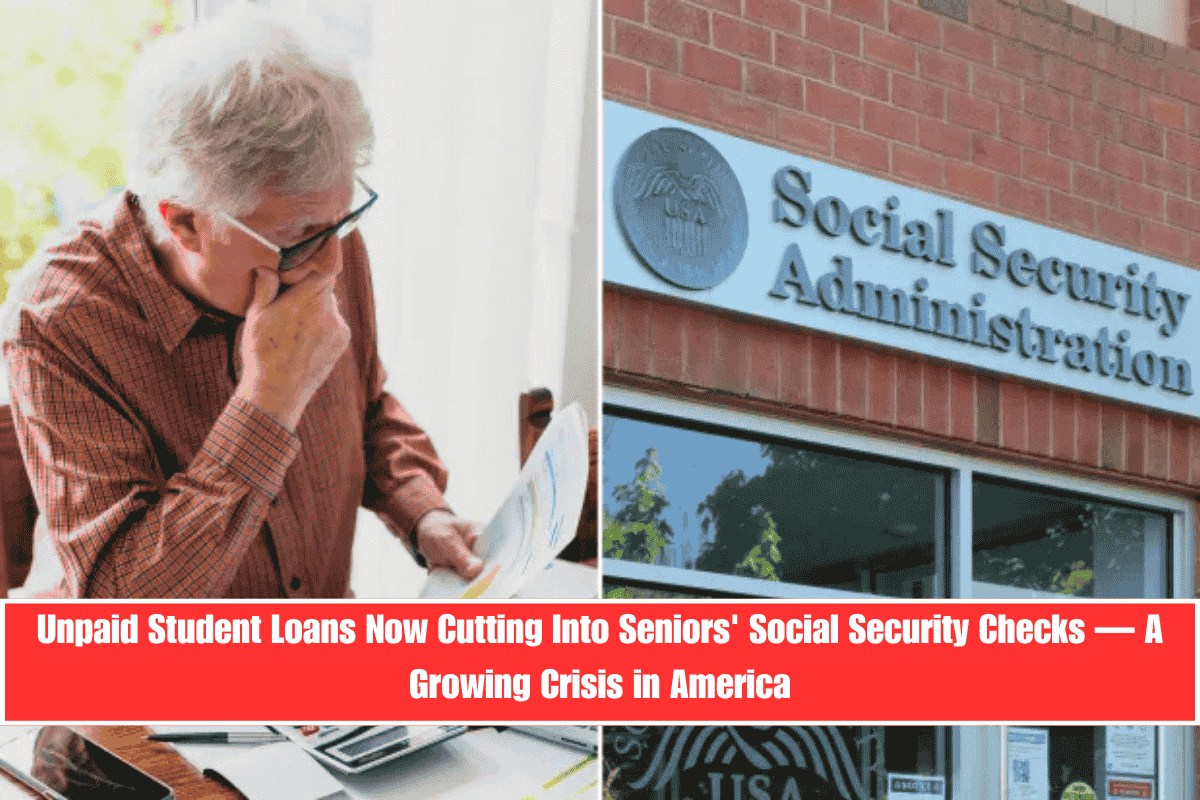For millions of older Americans, the dream of a peaceful retirement is being shattered by decades-old student loans. Stories like Christine Farro’s, a 73-year-old from California, highlight the growing number of seniors whose Social Security checks are being reduced to repay student loan debt that just won’t go away.
Despite working long hours, staying on a budget, and even earning a master’s degree, Farro’s loan balance grew instead of shrinking — eventually reaching nearly $250,000. And she’s far from alone.
A Lifetime of Work, Still in Debt
Farro, a single mother who studied developmental psychology, juggled work and school for years. But like many Americans, she borrowed to pay tuition, hoping that her degree would lead to a better-paying job.
After entering the field of child welfare, she found herself unable to make the loan payments, which eventually ballooned due to missed payments, interest, and fees. By 2008, she had consolidated her loans, paying about $1,000 a month—still not enough to stay ahead. Once she retired, the government began taking money directly from her Social Security.
Even with a brief break during the COVID-19 loan pause in 2020, payments resumed in 2023, and the balance continued to hang over her.
Involuntary Collections Return
The issue worsened in 2025 with the Trump administration resuming involuntary student loan collections for borrowers in default. The U.S. Department of Education confirmed it would garnish wages, seize tax refunds, and reduce Social Security and disability benefits to cover unpaid debts.
That’s what’s happening to Farro and hundreds of thousands of others.
Federal law does provide some protection, but only $750 per month of Social Security benefits is shielded. The rest can be taken, leaving many with barely enough to survive.
The Numbers Are Staggering
According to the National Consumer Law Center, Americans aged 60 and older now owe $125 billion in student loans—six times more than they did just 20 years ago.
From 2001 to 2019, the number of retirees losing part of their benefits over student debt grew from 6,200 to 192,300. And this year, that number has soared even higher to 452,000 Americans over 62 in default.
This includes people like Debbie McIntyre, a 62-year-old teacher in Kentucky. With her husband out of work and living on disability, and their rent rising sharply, she’s out of options. “I’ll never get out of this hole,” she told AP.
The Human Cost
The emotional and financial strain is deep. Braxton Brewington from the Debt Collective said seniors in these situations are often forced to make extreme choices:
“They skip meals, dilute medication, empty their savings or 401(k)s — some are even driven into homelessness.”
He adds that many seniors have technically repaid their original loan amounts, but continue to owe due to accrued interest and penalty fees, which make escaping debt nearly impossible.
Is There Any Relief in Sight?
While Social Security benefits are being impacted, there are also policy shifts and updates being made, including:
- A new Social Security rule starting in November that could mean more monthly income for millions.
- Expanded perks for select seniors, including health-focused benefits and even recreational incentives like free or subsidized golf sessions.
Still, these adjustments are not enough to fully offset the financial pressure from student loan collections on older Americans living on fixed incomes.
What began decades ago as a tool for opportunity—student loans—has now become a crushing burden for many retired Americans. As seniors like Christine Farro lose parts of their hard-earned Social Security to decades-old debt, it’s clear the system needs change. With student loan debt rising sharply among those 60+, the challenge is no longer about just managing money—it’s about preserving dignity in retirement.


















Leave a Reply